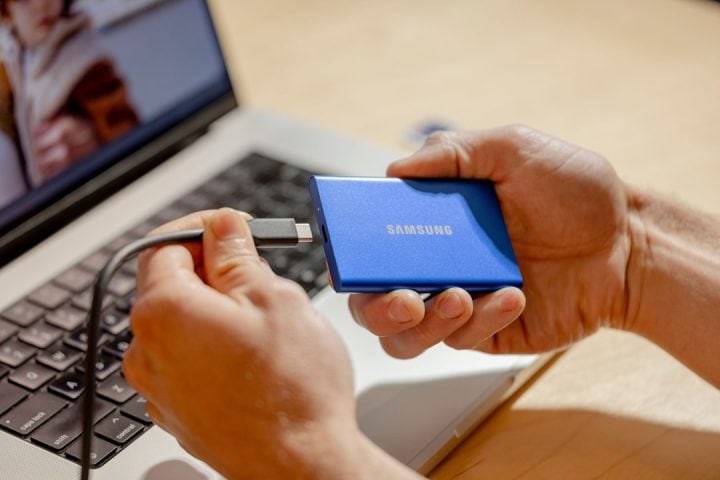Have you ever forgotten your password? Or worse, had one stolen? You’re not alone. Passwords can be hard to keep track of, and even harder to keep secure. But what if we didn’t need passwords at all? That’s where passkeys come in. They’re a new way to log in online — without needing to type in those pesky passwords.
In this guide, we’ll explore what passkeys are, how they work, and how they’re using something called FIDO2 security keys. Don’t worry — we’ll keep it fun, light, and simple.
What is a Passkey?
A passkey is a new way to log into accounts without typing a password. Instead of remembering complex strings like “P@55w0rD!123”, you just use something you already have — a phone, a computer, or a special security key.
A passkey is:
- More secure than passwords
- Easier to use
- Almost impossible to phish or steal
The magic happens behind the scenes. Instead of sending a password over the internet, your device uses math (called encryption) to prove you’re you. This makes it much safer.
Say Hello to FIDO2
Passkeys are built on a technology called FIDO2. That stands for “Fast Identity Online“, version 2. FIDO2 is a set of standards that help devices and websites work together to keep you secure. It was developed by the FIDO Alliance — a group of tech companies like Google, Apple, Microsoft, and others.
Here’s what makes FIDO2 awesome:
- It uses public-key cryptography — no secrets are sent across the internet
- It’s resistant to phishing — you won’t be fooled by fake websites
- It supports using devices you already own — like your phone or laptop
- It works with hardware keys — small physical devices that plug into your computer or phone
How Does a Passkey Work?
Let’s break it down step by step.
- You visit a website and choose to log in with a passkey.
- Your device generates two keys: one public, one private.
- The website gets the public key, and your device keeps the private key safe.
- Next time you log in, the website sends a challenge to your device.
- Your device solves the challenge using its private key and sends back the answer.
- The website checks it with your public key. If it matches — you’re in!
It’s like a secret handshake. But only your device knows the moves.
Where Are Passkeys Stored?
Passkeys can live on your phone, your computer, or a secure hardware device. They’re usually protected with a fingerprint, a face scan, or a PIN. That way, even if someone steals your device, they still can’t use your passkeys.
If you’re using an iPhone or a Mac, your passkeys get stored in your iCloud Keychain and sync across devices. Google and Microsoft do something similar with their cloud accounts. Pretty neat!
What Are FIDO2 Security Keys?
FIDO2 security keys are small physical devices — usually USB or Bluetooth — that hold your passkeys. They’re super secure because:
- They never share your password — they don’t even store it!
- They can’t be hacked remotely
- They work across websites and services
You might’ve seen them. They look like tiny USB drives, sometimes with a button or a fingerprint reader. Brands like YubiKey, SoloKey, and Google Titan make them.
Here’s how you use one:
- Plug it into your device (or connect with Bluetooth)
- Tap a button or scan your finger
- You’re logged in — boom!
Why Are Passkeys Better?
Let’s compare:
| Category | Passwords | Passkeys |
|---|---|---|
| Easy to use? | No 😓 | Yes 😎 |
| Can be guessed? | Yes | No |
| Can be phished? | Yes | Almost impossible |
| Shared across sites? | Too often | No |
With passkeys, users don’t need to remember anything. Just unlock your phone or tap a key.
Will Passkeys Replace Passwords?
They might! Big tech companies are already making the switch. Google, Apple, Microsoft, Amazon, PayPal, eBay, and many others support passkeys now.
And you might already be using a form of it. Apple’s Face ID login to iCloud? That’s a passkey at work. Google letting you log in with your phone instead of a password? Yep, that’s also a passkey.
The more websites that support it, the faster passwords may become a thing of the past.
How Do You Get Started?
It’s easier than you think!
- Go to a website or app that supports passkeys (like Google or eBay).
- Go to the security settings and choose to add a passkey.
- Use your phone, computer, or physical FIDO2 key to create and save a passkey.
- Next time you log in, you’ll see the option to use your passkey!
Want extra safety? Get a FIDO2 security key and register it with your accounts. That way, even if your phone gets lost or stolen, you have a backup.
Are There Downsides?
A few, but they’re manageable.
- If you lose all your devices, you may lose access. Always have a backup method.
- Not every website supports passkeys — yet.
- Some setups require a bit of learning.
The good news? Things are getting easier every day. More sites are supporting passkeys, and more devices are ready out of the box.
What’s Next?
Passkeys and FIDO2 keys are changing the way we think about online security. Instead of making us responsible for long, complicated passwords, they let our devices do the heavy lifting.
And let’s face it — our brains have better things to do than remember random characters! 😄
Final Thoughts
Passkeys are here to stay. They’re fast, easy, and way more secure than passwords. Whether you’re logging into your bank, your email, or your favorite cat video site, passkeys keep things safe and simple.
So go ahead — take that first step. Try creating a passkey today. Your future self (and your cybersecurity) will thank you!
